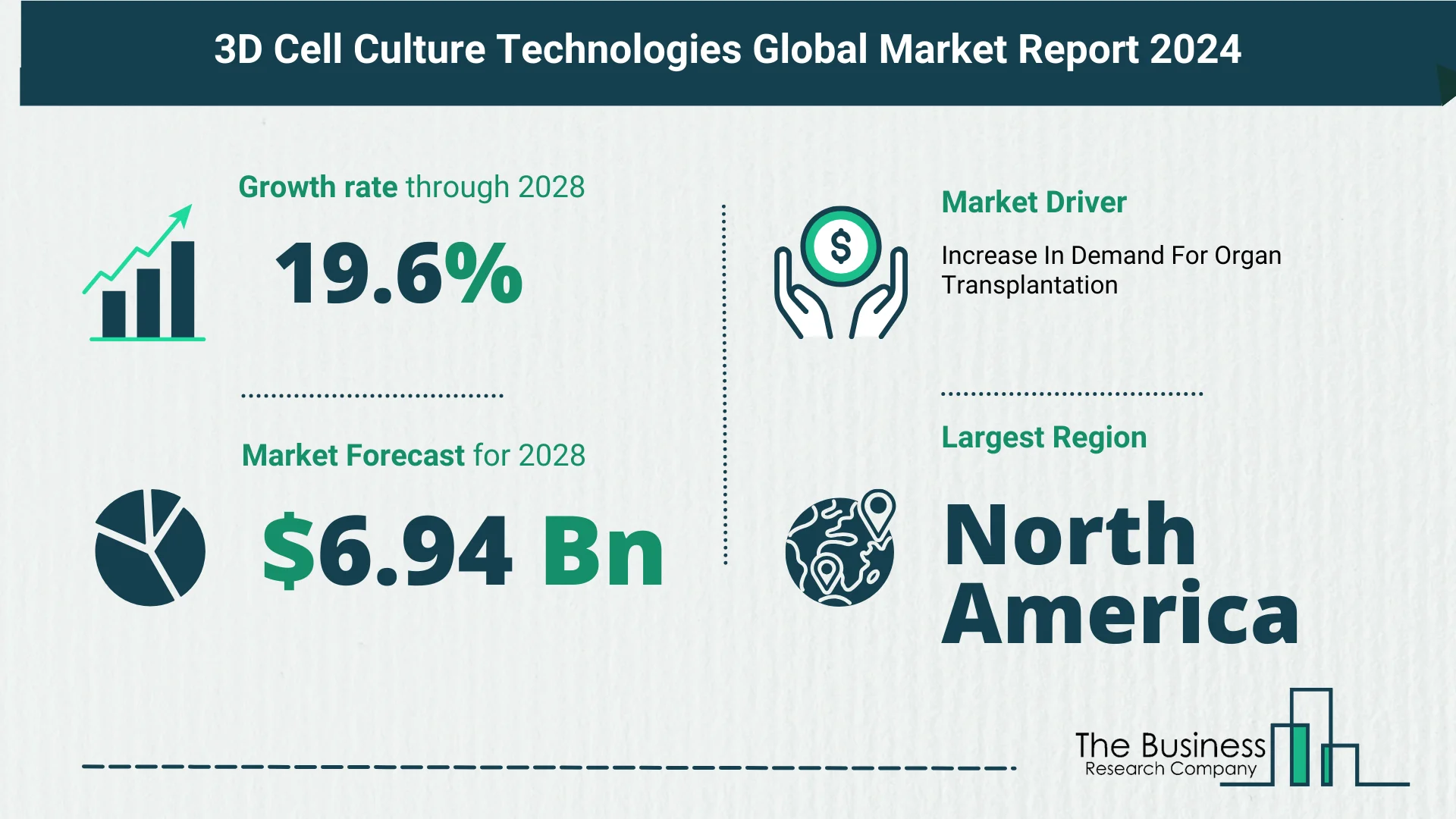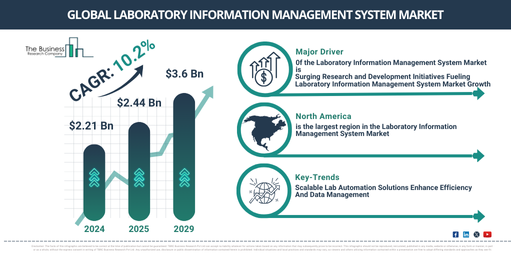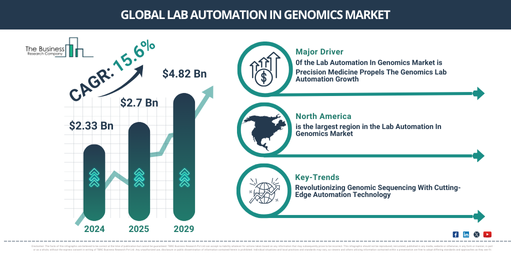Understand How The 3D Cell Culture Technologies Market Is Poised To Grow Through 2024-2033
The Business Research Company’s global market reports are now updated with the latest market sizing information for the year 2024 and forecasted to 2033
As per The Business Research Company’s 3D Cell Culture Technologies Global Market Report 2024, the 3D cell culture technologies market is expected to show significant growth in the forecast period.
The 3D cell culture technologies market has experienced rapid expansion, projecting a promising trajectory. From $2.85 billion in 2023, it is set to reach $3.39 billion in 2024 at an impressive CAGR of 19.0%. Looking ahead, the market is expected to burgeon to $6.94 billion by 2028, with a compounded annual growth rate of 19.6%. This remarkable growth is attributed to several historical and forecasted factors.
- Historic Growth Drivers: Advances in cell biology, drug development, the surge in chronic diseases, and government funding have been pivotal in driving historical market growth.
- Forecasted Growth Factors: The pharmaceutical industry’s role, escalating research and development activities, and growing environmental and ethical considerations are poised to steer the market toward further growth.
Organ Transplantation Fuels Demand
The 3D cell culture technologies market is witnessing a significant boost due to the escalating demand for organ transplantation. The ability of 3D cell cultures to mimic tissues or organs proves instrumental in transplantation procedures, aiding in tissue and organ regeneration. This technology also facilitates drug toxicology screening.
- Organ Transplants Surge: In 2022, the United States saw a 3.7% increase in organ transplants, reaching 42,887. Deceased organ donors also marked a record year with a 7.5% increase. The broadening criteria for deceased organ donation and an increase in donations after circulatory death (DCD donors) contribute to this surge.
Industry Giants: Key Players in 3D Cell Culture Technologies
Leading the charge in the 3D cell culture technologies market are major companies dedicated to advancing research and technology. These companies play a crucial role in shaping the industry landscape.
- Key Market Players: Becton Dickinson and Company, Corning Incorporated, Eppendorf AG, GE Healthcare, Merck KGaA, Thermo Fisher Scientific Inc., Lonza Group AG, HiMedia Laboratories Pvt. Ltd., Agilent Technologies Inc., PromoCell GmbH, and more.
Innovations Transforming Cell Culture
In a bid to gain a competitive edge, major players are introducing groundbreaking products. One notable innovation is the PODS-PeptiGels, a combination of synthetic peptide hydrogels (PeptiGels) and sustained-release growth factors (PODS), providing a highly adaptable environment for 3D cell culture.
- PeptiGels and Pods Synergy: Companies like Cell Guidance Systems and Manchester BIOGEL collaborated to launch PODS-PeptiGels. This ready-to-use kit offers researchers flexibility, allowing them to select from over 70 growth factors and combine them with various hydrogels, each offering mechanical and biomimetic tuneability.
View More On The 3D Cell Culture Technologies Market Report 2024 – https://www.thebusinessresearchcompany.com/report/3d-cell-culture-technologies-global-market-report
Strategic Moves: CELLINK’s Entry Into Contract Research
In a strategic move, CELLINK Group acquired Visikol Corporation for $7.5 million in May 2021, marking their entry into the contract research market. Visikol Corp., known for its services in 3D cell culture, tissue imaging, multiplex imaging, and digital pathology, adds a new dimension to CELLINK’s capabilities.
- CELLINK’s Acquisition: The acquisition of Visikol Corporation broadens CELLINK’s offerings and positions them as a key player in the contract research services market.
Market Segmentation: Understanding Diverse Applications
The 3D cell culture technologies market is intricately segmented to cater to the diverse needs of end-users. Key segments include types of technologies, applications, and end-users.
- Technology Types: Scaffold-based, Scaffold-free, 3D Bioreactors.
- Applications: Cancer Research, Stem Cell Research, Drug Discovery, Regenerative Medicine.
- End Users: Research Laboratories and Institutes, Biotechnology and Pharmaceutical Companies, Hospitals and Diagnostic Centers, and Other End Users.
Regional Dynamics: North America Takes the Lead
In 2023, North America emerged as the largest region in the 3D cell culture technologies market. This prominence underscores the region’s robust healthcare infrastructure and technological advancements, contributing significantly to the market’s global standing.
In conclusion, the 3D cell culture technologies market is on a robust growth trajectory, driven by factors such as increased demand for organ transplantation, innovative product introductions, strategic acquisitions, and expanding applications. As the industry continues to evolve, it presents exciting opportunities for both established players and emerging entrants in the field.
Request A Sample Of The Global 3D Cell Culture Technologies Market Report 2024:
https://www.thebusinessresearchcompany.com/sample_request?id=2462&type=smp



